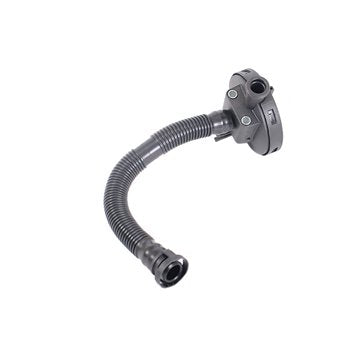How a Clp Engine Can Boost Effectiveness in Different Industries
The arrival of CLP engines notes a significant change in functional performance across various fields, driven by their capability to enhance fuel intake and decrease downtime. Industries such as production and logistics stand to gain significantly from their durable style and consistent power result, which promise to enhance operations and enhance efficiency. As companies progressively focus on sustainability along with performance, the role of CLP engines comes to be a lot more critical. What continues to be to be seen is how these advancements will form the future landscape of commercial operations and their effect on wider economic fads (clp engine).
Summary of CLP Engines
CLP engines, or Constant Fluid Propellant engines, stand for a significant development in propulsion technology, especially for area applications. These engines make use of a continuous feed system that enables for the sustained expulsion of propellant, leading to improved efficiency and performance compared to traditional strong or hybrid propulsion systems. By preserving a constant flow of liquid propellant, CLP engines can achieve more exact thrust control, which is important for steering spacecraft in numerous mission scenarios.
The style of CLP engines incorporates innovative materials and innovative fuel management systems. clp engine. This causes minimized weight and increased integrity, vital factors for long-duration space objectives. The constant operation lessens the threat of combustion instability, a common challenge in conventional rocket engines.

Benefits in Manufacturing
The production of Continuous Liquid Propellant (CLP) engines presents numerous notable benefits that boost both efficiency and cost-effectiveness. One of the main advantages is the streamlined manufacturing procedure, which minimizes the intricacy connected with standard propulsion systems. By utilizing liquid propellant, producers can attain higher accuracy in engine efficiency, leading to optimized energy result and minimized waste.
Furthermore, CLP engines help with a higher degree of modularity, allowing for much easier assimilation right into different production lines. This versatility can considerably reduce preparations and boost total operational versatility. The use of CLP modern technology also often tends to decrease the need for considerable maintenance as a result of fewer moving components, which translates into lowered downtime and functional expenses.

Applications in Logistics
Leveraging Continual Fluid Propellant (CLP) engines in logistics provides considerable benefits in functional performance and reliability. These engines supply a durable remedy for different transportation requirements, making it possible for the smooth movement of products across large distances. The intrinsic layout of CLP engines permits regular power outcome, which converts right into smoother and extra foreseeable transportation routines.
Among the vital applications of CLP engines in logistics is in durable freight transportation, where they can drive both ground and aerial automobiles. Their capability to maintain high efficiency under varying tons problems makes certain that shipment timelines are fulfilled, therefore boosting client satisfaction. Furthermore, CLP engines can be incorporated into automated logistics systems, helping with real-time monitoring and optimizing course planning.
Furthermore, the sturdiness of CLP engines lowers upkeep downtime, permitting logistics companies to maximize their operational capabilities. This is specifically useful in warehousing operations, where efficiency in dealing with and transporting items is vital. visit this site As logistics remains to advance, the integration of CLP engines represents a forward-thinking technique that not just improves performance yet additionally sustains the industry's expanding demands for dependability and rate.
Influence on Power Effectiveness
How do Constant Fluid Propellant (CLP) engines improve energy effectiveness in transport? CLP engines utilize a constant flow of fluid gas, maximizing burning procedures and preserving a steady drive result. This design minimizes energy losses associated with typical combustion engines, where fuel shipment can vary and cause inefficiencies.
The continual procedure of CLP engines permits a more efficient thermal cycle, resulting in higher particular impulse contrasted to standard engines. clp engine. This converts to lowered gas intake for the same amount of job done, substantially decreasing functional expenses across various transportation industries, including air travel and maritime sectors
Moreover, the ability of CLP engines to keep optimum efficiency under differing lots problems decreases the requirement for regular acceleration and slowdown, additionally enhancing gas performance. Enhanced energy performance not only adds to set you back financial savings but additionally brings about decrease greenhouse gas emissions, aligning with worldwide sustainability goals.
Future Trends and Innovations
Emerging advancements in Continuous Fluid Propellant (CLP) engine innovation guarantee to transform the landscape of transport efficiency and sustainability. As sectors pivot towards greener options, CLP engines stand at the leading edge, integrating innovative materials and design approaches that boost performance while minimizing ecological effect.
One of the most promising patterns is the fostering of hybrid systems that incorporate CLP engines with renewable resource sources. This harmony can maximize gas consumption and reduce exhausts, lining up with international sustainability goals. Furthermore, developments in computational liquid characteristics (CFD) are promoting the design of even more aerodynamically efficient engines, leading to minimized drag and improved fuel effectiveness.
In addition, the development of smart tracking systems is readied to enhance functional performances. These systems leverage data analytics and IoT modern technology to enhance engine efficiency in real-time, making certain that the engines run within their most reliable specifications.
As research study remains to explore alternative propellant solutions-- such as biofuels and synthetic fuels-- the future of CLP engines go right here looks promising. By taking advantage of these technologies, sectors can not only improve their efficiency but also add considerably to a cleaner, a lot more lasting future in transportation.
Verdict
In conclusion, CLP engines represent a considerable improvement in effectiveness throughout several markets. Their capability to enhance fuel intake and minimize functional prices, integrated with a continual feed system, boosts power result and functional dependability. The integration of advanced materials and less relocating parts decreases maintenance requirements, while placement with sustainability goals settings CLP engines as a pivotal technology for the future. Proceeded technology in this field guarantees more improvements in efficiency and ecological performance.
Comments on “Extend the lifespan of your clp engine with regular care.”